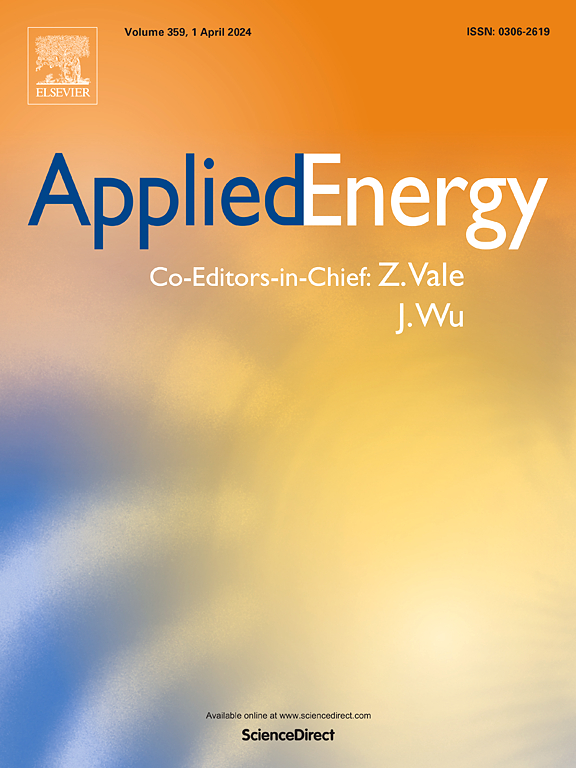The impact of temporal clustering on long-term energy system models
IF 10.1
1区 工程技术
Q1 ENERGY & FUELS
引用次数: 0
Abstract
The field of energy system modelling is experiencing significant development, driven by the urgent need to redesign the national energy systems to achieve carbon neutrality. A growing interest regards long-term energy system models, which enable tracking the pathway and not only the final need for installations. The increase in complexity may easily lead them to face computational limits. Therefore, modelling approaches are required that cluster data to reduce the size of the problem while limiting errors and inaccuracies. This article studies the impact of temporal clustering on the performances of a sector-integrated energy system model, considering the double-layer clustering scheme operating on two distinct temporal scales: intra-year and inter-year. The former is addressed through typical-day clustering (k-means and k-medoids), while the latter introduces multi-year gaps between representative years. This methodology is implemented in the open-source framework oemof, which is customized to the dual clustering approach. The study addresses a sector-integrated energy system, built on the Italian structure, with a multi-vector and multi-sector perspective along the 2020–2050 horizon. The impact is investigated by comparing multiple options with varying number of typical days and multi-year gap, comparing each configuration with a benchmark without clustering. The approach yields coherent representations of the energy system evolution, simultaneously reducing the memory usage down to 4 %. The outcomes show the benefits of balancing the number of representative years with the number of representative days, suggesting that such a trade-off leads to significant computational advantages. Although literature shows that time-series reduction is case-dependent, the double-layer clustering scheme appears promising for application on even more complex models, where a full-hour resolution would be computationally intractable.

时间聚类对长期能源系统模型的影响
由于迫切需要重新设计国家能源系统以实现碳中和,能源系统建模领域正在经历重大发展。人们对长期能源系统模型越来越感兴趣,这种模型可以跟踪路径,而不仅仅是最终需要安装。复杂性的增加很容易导致它们面临计算极限。因此,需要建模方法来聚类数据,以减少问题的大小,同时限制错误和不准确。本文考虑在年内和年际两个不同时间尺度上运行的双层聚类方案,研究了时间聚类对部门集成能源系统模型性能的影响。前者通过典型日聚类(k-means和k- medioids)来解决,而后者在代表性年份之间引入了多年的差距。该方法是在开源框架oemof中实现的,该框架是针对双集群方法定制的。该研究解决了一个基于意大利结构的部门集成能源系统,并在2020-2050年的地平线上具有多向量和多部门的视角。通过比较具有不同典型天数和多年间隔的多个选项,将每种配置与没有集群的基准进行比较,来研究其影响。该方法产生了能量系统演化的连贯表示,同时将内存使用降低到4%。结果显示了平衡代表性年数和代表性日数的好处,表明这种权衡会带来显著的计算优势。虽然文献表明时间序列缩减是个案相关的,但双层聚类方案似乎有希望应用于更复杂的模型,在这些模型中,一整个小时的分辨率在计算上是难以处理的。
本文章由计算机程序翻译,如有差异,请以英文原文为准。
求助全文
约1分钟内获得全文
求助全文
来源期刊

Applied Energy
工程技术-工程:化工
CiteScore
21.20
自引率
10.70%
发文量
1830
审稿时长
41 days
期刊介绍:
Applied Energy serves as a platform for sharing innovations, research, development, and demonstrations in energy conversion, conservation, and sustainable energy systems. The journal covers topics such as optimal energy resource use, environmental pollutant mitigation, and energy process analysis. It welcomes original papers, review articles, technical notes, and letters to the editor. Authors are encouraged to submit manuscripts that bridge the gap between research, development, and implementation. The journal addresses a wide spectrum of topics, including fossil and renewable energy technologies, energy economics, and environmental impacts. Applied Energy also explores modeling and forecasting, conservation strategies, and the social and economic implications of energy policies, including climate change mitigation. It is complemented by the open-access journal Advances in Applied Energy.
 求助内容:
求助内容: 应助结果提醒方式:
应助结果提醒方式:


